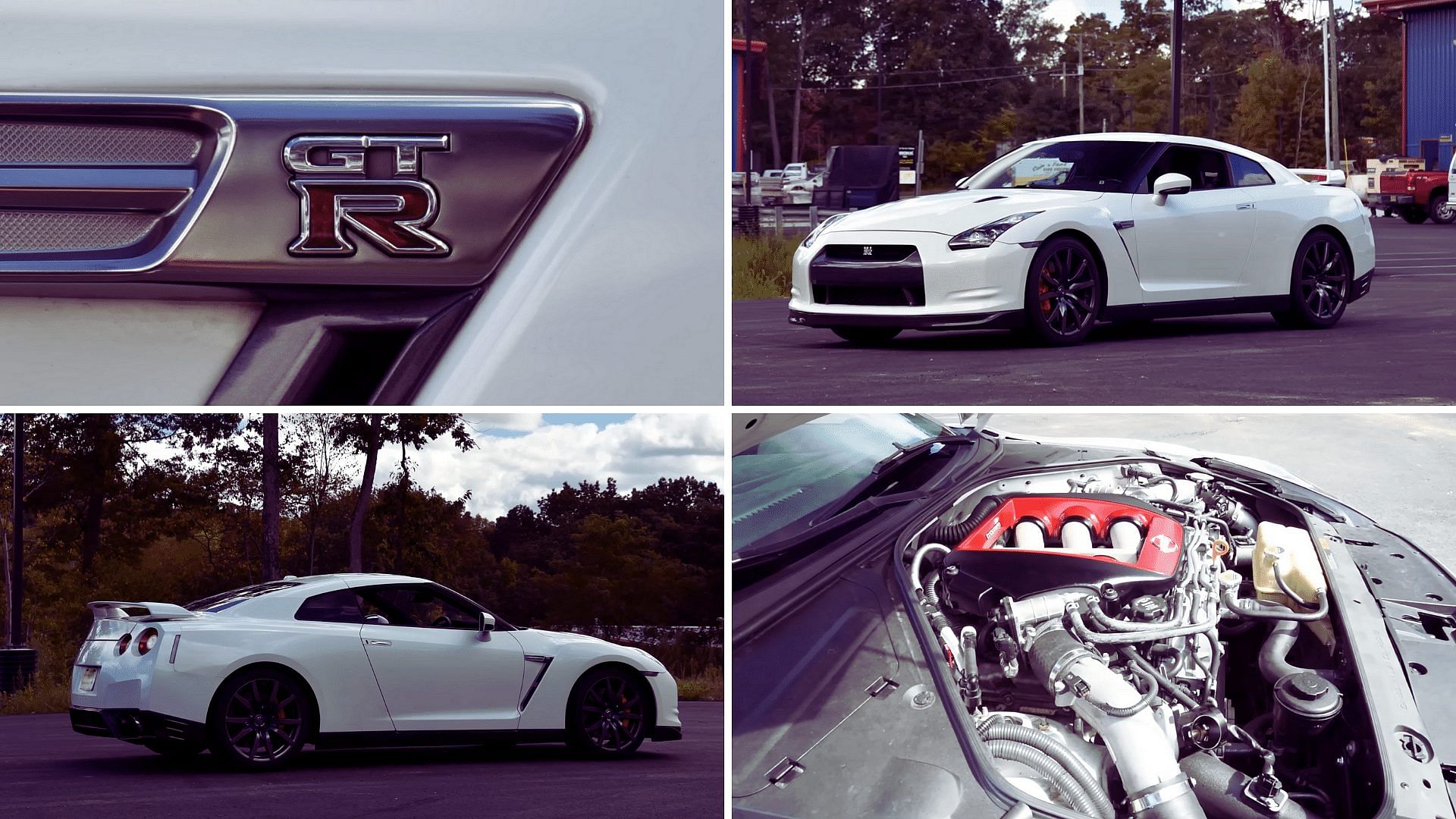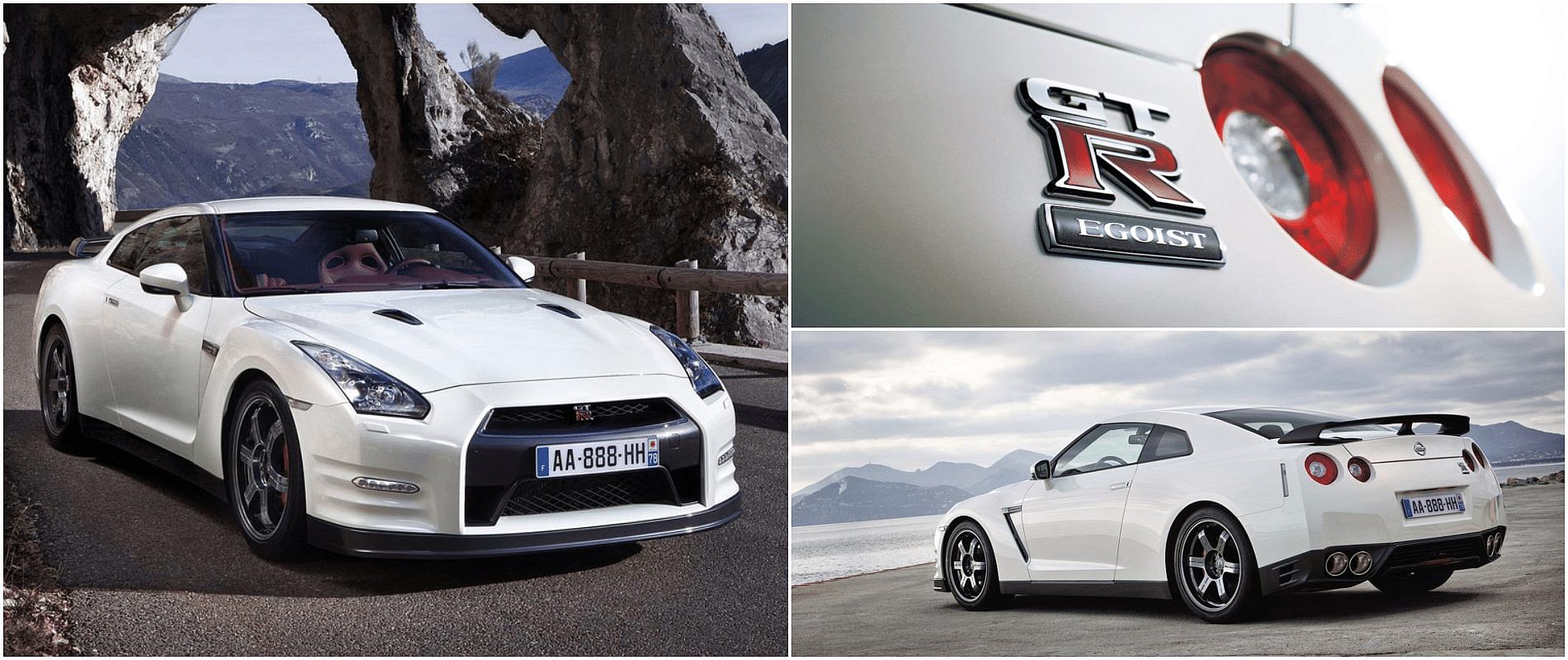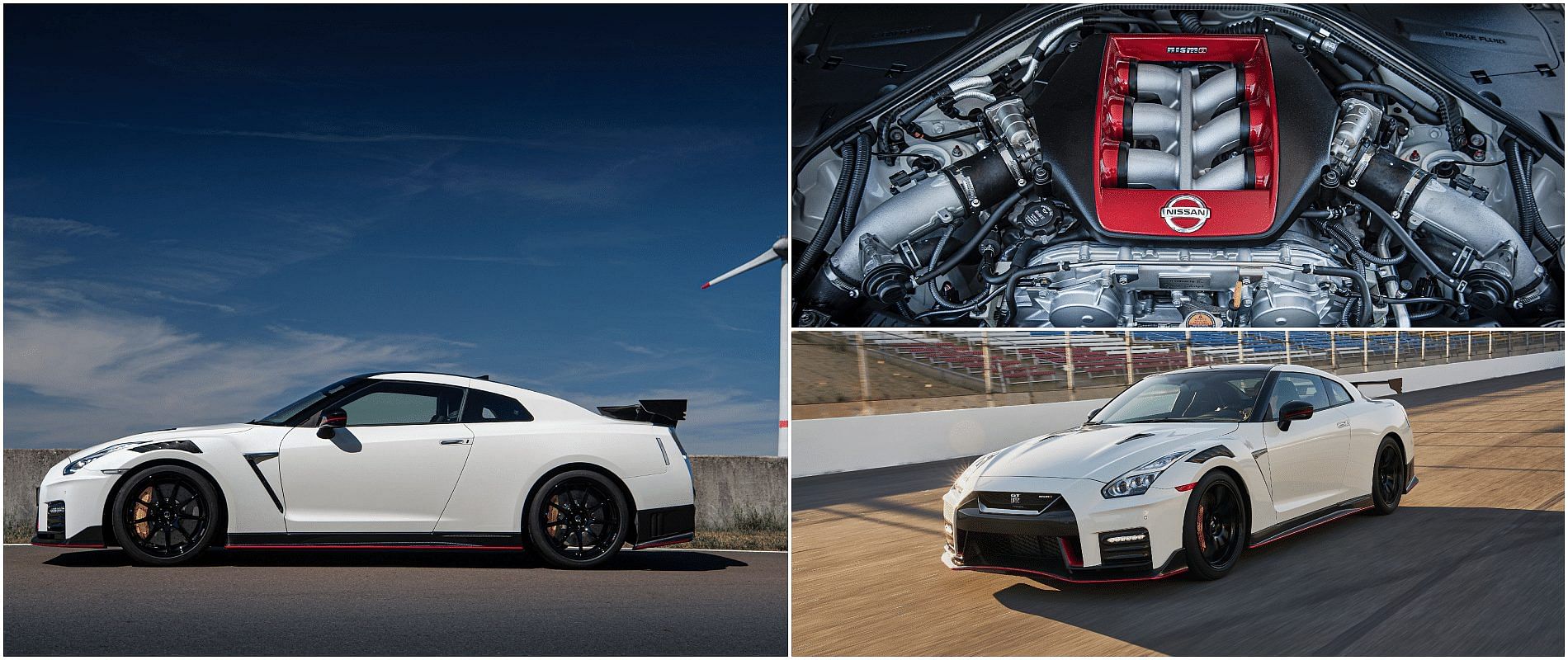These Are The Fastest Nissan GT-Rs Of All Time
JDM cars, especially Nissans, dominated the late '60s and 2000s thanks to their engineering excellence and top-notch technology. However, the GT-R lineup made the most of it by decimating its European counterparts by a mile and with a lower price. Here's a tribute to the fastest Nissan GT-Rs of all time.
Published March 20, 2024

The GT-R brand was born in 1969, but by 1973 it had been discontinued due to the fuel crisis back then. Sixteen years later, Nissan relaunched the Skyline GT-R again, and since then, we have seen about four generations of the GT-R that shut up supercars with dirt-cheap prices. In this article, we'll take a look at the fastest GT-Rs of all time, one by one.
The Nissan GT-R nameplate has become a legend in the history of the automotive industry. Ask any car enthusiast, and the GT-R has to be one of their favorite cars. The GT-R was first based on a model called the Skyline and initially manufactured by Prince Motor Co. Later, Nissan acquired the company and started manufacturing the Skyline themselves.
From its initial days until now, almost every generation of the GT-R has been known to provide better performance at a way cheaper price tag. This made it accessible to a lot of people who didn’t want to pay the premium for a pricey German or Italian coupe like the Porsches or Ferraris.
Not only was the GT-R the fastest car from Nissan's stable, but the Japanese manufacturer also created some of the best JDM sportscars of all time.
Now, without further ado, let's jump straight into the crowd of Godzillas.
12. 1973 Nissan Skyline GT-R Kenmeri (PGC110)

So here we start our list with the 1973 Nissan Skyline GT-R Kenmeri, which has a naturally aspirated 2.0-liter inline-6 engine. The 1973 Skyline GT-R Kenmeri has 160 hp and a torque output of 130 pound-feet. It can go from 0 to 60 MPH in 8.9 seconds and reach a top speed of 119 MPH.
| 1973 Nissan Skyline GT-R Kenmeri | Specs |
|---|---|
| Price | $176,000 |
| Powertrain | 2.0L Inline-6 |
| Power | 160 hp |
| Torque | 130 lb-ft |
| Transmission | 5-speed manual |
| 0-60 mph | 8.9 Seconds |
| Top Speed | 119 mph |
Nissan introduced the PGC110 generation as an upgrade over the pre-existing GT-R in 1973. The aerodynamics were improved, and it was way more streamlined than before.
The rear wheels also got a taste of disc brakes this time. Sadly, due to the fuel crisis back in the day, the demand for gas-guzzling sportscars fell hard, and Nissan had to pull the plug on the beautiful Kenmeri.
If you are wondering, the Kenmeri name became famous in the advertisement for this new GT-R, where there were two characters called Ken and Mary. There are probably less than 200 examples of this Kenmeri GT-R, which makes this generation very exclusive and rare.
11. 1971 Nissan Skyline GT-R Hakosuka (PGC10)

Next up is the 1971 Skyline GT-R Hakosuka, which has a naturally aspirated 2.0-liter inline-6 engine that produces 160 HP and 130 lb-ft of torque. It can go from 0 to 60 MPH in 8.5 seconds and reach a top speed of 124 MPH.
| 1971 Nissan Skyline GT-R Hakosuka | Specs |
|---|---|
| Price | $100,000 (exp) |
| Powertrain | 2.0L Inline-6 |
| Power | 160 hp |
| Torque | 130 lb-ft |
| Transmission | 5-speed manual |
| 0-60 mph | 8.5 seconds |
| Top Speed | 124 mph |
In 1968, Nissan debuted the first Skyline GT-R of all time. It was a four-door car with a 5-speed manual transmission powering the rear axle. It also came with a limited-slip differential and a disc brake setup in front. The two-door coupe version was on sale by the first quarter of 1971 and came with racing bucket seats and aluminum pedals.
It was popular under the name "Hakosuka." Hako means boxy, and "Suka" is an abbreviation of the word "skyline.".
10. 1995 Nissan Skyline GT-R R33

The fourth-generation GT-R, known as the Skyline GT-R R33, was released in 1995 and came with a 2.6-liter twin-turbocharged inline-6 engine that produces 276 HP and 260 lb-ft of torque. This meant that the car could go from 0 to 60 MPH in 5.3 seconds and reach a top speed of 155 MPH.
The Nissan R33 was also the first production car to complete a lap in under 8 minutes.
| 1995 Nissan Skyline GT-R R33 | Specs |
|---|---|
| Price | $70,847 (Average price) |
| Powertrain | 2.6L Twin-turbo Inline-6 |
| Power | 276 hp |
| Torque | 260 lb-ft |
| Transmission | 5-speed manual |
| 0-60 mph | 5.3 Seconds |
| Top Speed | 155 mph |
The fourth generation of GT-Rs came with a much more streamlined and appealing design than their predecessors. The mechanicals were more or less identical to the R32 generation, but Nissan rectified the issues faced by the R32 in this model.
For example, the R32 had a weak oil pump collar, which was corrected in the R33. It was offered in quite a lot of trims, e.g., the V-Spec, which received a revised and better version of the ATTESA E-TS AWD system.
Nissan also released a 400 R version of the R33, which had 400 horsepower on offer and was equipped with race-spec mechanicals all over it, making it reach a speed of 300 kph.
9. 1989 Nissan Skyline GT-R R32

The GT-R name returned in 1989 with the introduction of the Skyline GT-R R32. This car came with a 2.6-liter twin-turbocharged inline-6 engine that produces 280 HP and 260 lb-ft of torque. This helped the car go from 0 to 60 MPH in 5.6 seconds and reach a top speed of 158 MPH.
It ripped off almost every supercar at its time that charged nearly double its price. Additionally, the engine could've been easily tuned to produce a power figure upwards of 400 hp. It became a sensation in the industry back then.
| 1989 Nissan Skyline GT-R R32 | Specs |
|---|---|
| Price | $31,374 (Launch price) |
| Powertrain | 2.6L Twin-turbo Inline-6 |
| Power | 280 hp |
| Torque | 260 lb-ft |
| Transmission | 5-speed manual |
| 0-60 mph | 5.6 Seconds |
| Top Speed | 158 mph |
After the discontinuation of the Kenmeri GT-R, Nissan didn’t have any GT-Rs for about sixteen long years. In 1989, Nissan revived the GT-R nameplate with the R32 Skyline. Unlike its previous generations, it gave up on naturally aspirated engines and used a 2.4-liter twin-turbocharged straight-six gasoline engine.
Later, they added the legendary ATTESA E-TS AWD system, which helped it do unbelievable cornering maneuvers. However, this made the R32 heavier by almost 100 kg, so Nissan increased the size of the engine to a 2.6-liter engine called the RB26. With all this power and technology, this Skyline GT-R was something no one could’ve imagined coming out of the Nissan factory 10 years ago.
8. 1999 Nissan Skyline GT-R R34

The 1999 Nissan Skyline GT-R R34 was the first GT-R to carry the Skyline name. It was made ultra-famous by the "Fast and Furious" movie franchise, where Paul Walker used to drive a modified version of the car.
The Skyline GT-R R34 has a 2.6-liter twin-turbocharged inline-6 engine that produces 280 HP and 293 lb-ft of torque. It can go from 0 to 60 MPH in 4.8 seconds and reach a top speed of 165 MPH.
| 1999 Nissan Skyline GT-R R34 | Specs |
|---|---|
| Price | $70,000 |
| Powertrain | 2.6L Twin-turbo Inline-6 |
| Power | 280 hp |
| Torque | 293 lb-ft |
| Transmission | 5-speed manual |
| 0-60 mph | 4.8 Seconds |
| Top Speed | 165 mph |
The R34 was the pinnacle of the Skyline Series GT-R. The overall body was shortened, the engine had more power, the transmission now had six gears, and a display in the dash showed different readings about the engine all the time.
The V-Spec model came with carbon fiber elements, an active limited-slip differential, front and side splitters, and a rear diffuser to keep the airflow smoother. The R34 broke its predecessor’s record at the Nurburgring with an unofficial time of 7 minutes and 52 seconds and achieved a top speed of 203 mph. The sports coupe's only worthy competitor back then was the Toyota Supra, which is another monumental product in JDM history.
7. 2009 Nissan GT-R R35

After being discontinued for 7 years, Nissan brought back the GT-R in 2009 with a completely new look and powertrain. The 2009 Nissan GT-R R35 came with a 3.8-liter twin-turbocharged V6 engine that produces 480 HP and 430 lb-ft of torque. This helped it go from 0 to 60 mph in 3.2 seconds and reach a top speed of 193 mph.
| 2009 Nissan GT-R R35 | Specs |
|---|---|
| Price | $70,475 |
| Powertrain | 3.8L Twin-turbo V6 |
| Power | 480 hp |
| Torque | 430 lb-ft |
| Transmission | 6-speed dual-clutch automatic |
| 0-60 mph | 3.2 Seconds |
| Top Speed | 193 mph |
The R35 GT-R was first revealed in 2007, without the Skyline nameplate. Other than being boxy and bulky, there were almost no similarities between the GT R and its predecessors.
The engine was now a twin-turbocharged 3.8-liter V6 unit, and a super-responsive dual-clutch automatic gearbox was also added to the GT-R.
Nissan kept offering better-tuned power figures to its customers over time. The last GT-R Nismo had 600 hp in stock. However, the engine has huge potential for tuning. Some people were even able to churn out upwards of 1,000 horsepower from the 3.8-liter V6.
6. 2009 Nissan GT-R R35 Spec-V

The 2009 Nissan GT-R R35 Spec-V has a 3.8-liter twin-turbocharged V6 engine that produces 480 HP and 430 lb-ft of torque. This helped the car go from 0 to 60 MPH in 3.2 seconds and reach a top speed of 193 MPH.
| 2009 Nissan GT-R R35 Spec-V | Specs |
|---|---|
| Price | $106,600 approx |
| Powertrain | 3.8L Twin-turbo V6 |
| Power | 480 hp |
| Torque | 450 lb-ft |
| Transmission | 6-speed automatic |
| 0-60 mph | 3.2 Seconds |
| Top Speed | 193 mph |
In 2009, Nissan introduced the Spec-V trim of the GT-R, which came with a high-gear boost controller to increase the pressure in the turbochargers, helping it achieve 20nm more torque than before. Nissan also added titanium exhausts, Recaro race seats, and carbon ceramic brakes to the SpecV trim.
It was also the lightest GT-R R35 model that not only offered more exclusivity than the Nismo but also propelled a better ride quality. The car deleted the rear seats, making it only a two-seat sports car.
5. 2020 Nissan GT-R R35 Track Edition

The 2020 Nissan GT-R R35 Track Edition has a 3.8-liter twin-turbocharged V6 engine that produces 600 HP and 484 lb-ft of torque. It can go from 0-60 MPH in 2.7 seconds and reach a top speed of 193 MPH.
| 2020 Nissan GT-R R35 Track Edition | Spec |
|---|---|
| Price | $147,335 |
| Powertrain | 3.8L Twin-turbo V6 |
| Power | 600 hp |
| Torque | 484 lb-ft |
| Transmission | 6-speed dual-clutch automatic |
| 0-60 mph | 2.7 Seconds |
| Top Speed | 193 mph |
In 2014, Nissan announced the Track Edition GT-R, in which Nissan worked mainly on weight savings. The rear seats were omitted, the air inlets were now carbon fiber, there were new Recaro seats, a new front spoiler, titanium exhausts, etc. The cooling mechanism of the brakes was also improved.
In 2020, the Track Edition was updated, and it came with the Nismo GT-R drivetrain, carbon fiber roof, forged aluminum alloy wheels, carbon ceramic brakes, a carbon fiber rear spoiler, and a Nismo-tuned suspension setup.
4. 2012 Nissan GT-R R35 Egoist

Next up is the limited edition 2012 Nissan GT-R R35 Egoist, which came with a 3.8-liter twin-turbocharged V6 engine that produces 530 HP and 451 lb-ft of torque. This helped it go from 0 to 60 MPH in 3.0 seconds and reach a top speed of 195 MPH.
| 2012 Nissan GT-R R35 Egoist | Specs |
|---|---|
| Price | $89,950 |
| Powertrain | 3.8L Twin-turbo V6 |
| Power | 530 hp |
| Torque | 451 lb-ft |
| Transmission | 6-speed automatic |
| 0-60 mph | 3.0 Seconds |
| Top Speed | 195 mph |
2012 saw Nissan launch its limited edition "Egoist" trim, which produced more power than before. Nissan only sold 42 units of the Egoist GT-R model across the globe, while 35 of them were sold in Japan itself. This limited edition model, made only for the Japanese Domestic Market (JDM), offered great customization options for the interiors as well as the exteriors.
Its exclusive customers were given 20 interior color options to choose from. It was more focused on the cosmetic appearance and ambiance of the sports car.
3. 2021 Nissan GT-R50

The special edition Nissan GT-R50 came with a 3.8-liter twin-turbocharged V6 engine that produces 711 HP and 575 lb-ft of torque. The 2021 GT-R50 could go from 0 to 60 in 2.9 seconds and reach a top speed of 195 mph.
| 2021 Nissan GT-R50 | Specs |
|---|---|
| Price | $1.1 Million |
| Powertrain | 3.8L Twin-turbo V6 |
| Power | 711 hp |
| Torque | 575 lb-ft |
| Transmission | 6-speed dual-clutch automatic |
| 0-60 mph | 2.9 seconds |
| Top Speed | 195 mph |
To celebrate the 50th anniversary of the GT-R nameplate, Nissan announced the limited edition GT-R50 as the last hurrah before the end of the GT-R’s journey. In May 2020, they showcased the first production version of the R50, which they initially didn’t want to produce for customers.
It has more power than the Nismo and gets a total makeover in its design. Among other changes, the wheels are now made of carbon fiber, and it gets an active rear spoiler for better performance. One of the key reasons to include this in the list is not only its uniqueness and exclusivity, but the car is special in other ways too. This Nissan GTR's horsepower is the highest among all the other GTRs on the list.
2. 2020 Nissan GT-R R35 Nismo

The 2020 Nissan GT-R R35 Nismo has a 3.8-liter twin-turbocharged V6 engine that produces 600 HP and 481 lb-ft of torque. It can go from 0-60 MPH in 2.6 seconds and reach a top speed of 198.8 MPH.
| 2020 Nissan GT-R R35 Nismo | Specs |
|---|---|
| Price | $162,325 |
| Powertrain | 3.8L Twin-turbo V6 |
| Power | 600 hp |
| Torque | 481 lb-ft |
| Transmission | 6-speed dual-clutch automatic |
| 0-60 mph | 2.6 Seconds |
| Top Speed | 198.8 mph |
The GT-R Nismo debuted at the 2013 Tokyo Motor Show with a ton of race-spec upgrades by Nismo. A new Nismo-tuned suspension and brake setup were installed, the aluminum trunk lid was now made of carbon fiber, and front and rear brake ducts were added, as well as a larger carbon fiber rear wing. All the changes made the GT-R Nismo lighter by 17 kg.
In the 2020 Nismo upgrade, they used a lot of elements from the GT3 touring sibling of the GT-R. The new turbochargers were from the GT3 model. The roof, hood, and fenders were all made of carbon fiber for weight reduction. The midsize coupe was almost 37 to 38 kg lighter than the initial model, and it was faster than ever.
1. 2021 Nissan GT-R T-Spec

The fastest GT-R of all time is the 2021 Nissan GT-R T-Spec. It comes with a 3.8L twin-turbocharged V6 engine that makes 565 HP and 467 LB-FT of torque. It could go from 0 to 60 mph in 3.2 seconds and have a top speed of 200 mph.
| 2021 Nissan GT-R T-Spec | Specs |
|---|---|
| Price | $142,885 |
| Powertrain | 3.8L Twin-turbo V6 |
| Power | 565 hp |
| Torque | 467 lb-ft |
| Transmission | 6-speed dual-clutch automatic |
| 0-60 mph | 3.2 seconds |
| Top Speed | 200 mph |
The 2021 Nissan GT-R T-Spec was born three years ago but disappeared quite quickly. However, with the upcoming 2024 model of the GT-R, Nissan brings back the T-Spec model. Now the GT-Rs are equipped with increased downforce without compromising the drag coefficient.
Powered by the iconic twin-turbocharged V6 engine, the GT-R T-Spec brings back memories of the iconic Midnight Purple and Millennium Jade heritage color schemes.
Write a comment
Comments
No Comments Yet









